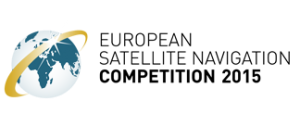Call for Application
Hackathon for Environmental Sensors (Hardware) and IoT for Climate Services
Date: 19-23 November 2018 @ KNUST Kumasi Business Incubator, Kumasi
Background
TWIGA is a 4-year project (2019 – 2023) under EU Horizon2020 aimed to transform weather water data into value-added information services. It is made up of a consortium of 18 partners – 8 from Africa and 10 from Europe.
At the moment the products and services being considered some of which have been tested by TWIGA partners are in the Agriculture, Water, Energy, Disaster Response and Management, and Insurance sectors. For these products and services to be successful in the African market, often they need to be bundled and may require public-private partnerships (Bellagio-African-PPP-for-Climate-services 2017). For Agriculture, the following products are being considered: agriculture knowledge and information systems, crop monitoring (health and yield), site evaluation for crops, crop selection, and calendar, weather forecasting, fertilizer advice, Pest and disease management, sowing and planting advise, water use and irrigation advice, soil moisture assessment and modeling, soil nutrients assessment, salinity assessment, flood risk assessment, flood early warning system, drought risk assessment, drought monitoring, Extreme weather risk assessment, Extreme weather early warning, disaster monitoring, and impact assessment, agricultural (index) insurance, market access assessment and market information, climate change modeling and monitoring, pasture, and water bodies identification and monitoring, forest and bushfire warning and monitoring, agricultural control, and compliance monitoring (Noort, 2018).
Objectives of the Hackathon
To foster involvement by young scientists and entrepreneurs, TWIGA will organize five hackathons; three on the development of geo-services at Strathmore (Kenya), TU Delft (Netherlands), and SAWS (South Africa), and two on sensor development at KNUST (Ghana), and TU Delft (Netherlands).
Because the hackathon will be partly funded by TWIGA, there has to be a realistic outlook toward a service. Therefore the objective of the hackathon in Kumasi will be to develop a viable product (environmental sensor and/or service) in 5 days in line with the TWIGA products and services outlined above.
Method
The SPRINT concept, more or less, which brings people in five days from concept to tested minimal viable product, will be used.
Requirements and Application Procedure
The call is open to only teams from Ghana. Similar hackathons will be organized in other parts of Africa later. The teams could be formed by individual persons, students, start-ups, companies, NGOs, or government organizations. Teams should have expertise in software and hardware development. All teams need to be physically present during the 5-day Hackathon in Kumasi.
All interested teams should send their application (2–page concept note, and the resume or CV of all proposed team members) on the environmental sensor(s) and/or IoT for climate service they intend to develop to info@twiga-h2020.eu with the words [TWIGA Hackathon in Kumasi] in the subject line of the email. The application should be submitted by 23.00hrs CET on 12 October 2018.
Start-ups that provided letters of support for the TWIGA project proposal are highly encouraged to apply as well as teams with women.
Prizes
5 Teams of not more than 3 people per team will be invited if they meet all the set requirements. There are prizes of €1500, €1000, and €500 for numbers one, two, and three. These three finalists will be supported to take their ideas from conceptualization to full prototype ready to be tested on the market within 2 years.
The intellectual property rights of the winning prototypes developed during the course of the 5 days Hackathon will be shared between the developers and the TWIGA project.
Evaluation Criteria
At least one team member should have a University degree in the field of Engineering, Computer Science, Physics, or a related field with at least one (1) year of experience with hardware/software development. A gender-balanced team will be an advantage. The main evaluation criteria will be the innovation and technology readiness level of the proposed product.
Logistics for the Hackathon
Accommodation (full board) will be provided if needed. Tickets for public transport to and from the venue will be reimbursed against receipts. Each team member will be required to present a national Identification card (e.g. Driving License, Passport, and Voters (ID) and a National Health Insurance Card or other forms of Health Insurance.
Program for the 5-Day Hackathon
Monday 19
Morning: Arrival/registration and an introduction of Teams (5 teams, 3 people (max) per team); Overview of concepts
Afternoon: Introduction and exercise LOOM
Tuesday 20
Morning: LOOM for specific applications, walkthrough, bottlenecks
Afternoon: Remix, improve the concept, and sketch.
Wednesday 21
Decide on the final design, rumble, and storyboard
Thursday 22
Build prototype
Friday 23
Test & learn
Award ceremony
Wrap-up, goodbye teams
For further information send an email to info@tahmo.org. Teams will be invited to the hackathon only after their proposal has been accepted and at least one member of the team interviewed via teleconference.
Sponsors for the Hackathon:
European Community’s Horizon 2020 Programme (2014-2020) under grant agreement n° 776691, Delft Global Initiative @ the Delft University of Technology, the Netherlands, Oregon State University, USA and the Kwame Nkrumah University of Science and Technology, Kumasi, Ghana.

